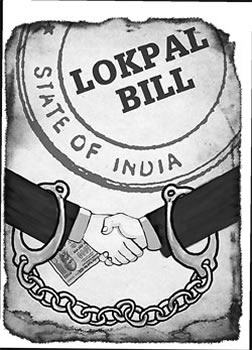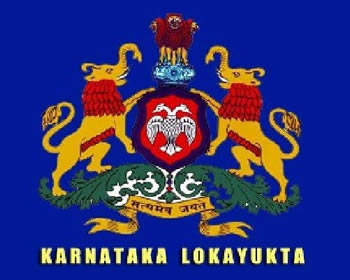Difference between Lokpal and Lokayukta
Key Difference: The Lokpal is the central governing body that has jurisdiction over all Members of Parliament and central government employees in cases of corruption. The Lokayuktas are similar to the Lokpal, but function on a state level.
include("ad4th.php"); ?>
 The term Lokpal was first coined by late Mr. L.M. Singhvi, a member of parliament, in 1963 during a debate. Today, the term has come to mean, the "caretaker of the people." The term was the basis for the Lokpal Bill, which was first drafted and introduced in 1968 by Adv. Shanti Bhushan. It was an anti-corruption bill that aimed to address the rampant corruption in India.
The term Lokpal was first coined by late Mr. L.M. Singhvi, a member of parliament, in 1963 during a debate. Today, the term has come to mean, the "caretaker of the people." The term was the basis for the Lokpal Bill, which was first drafted and introduced in 1968 by Adv. Shanti Bhushan. It was an anti-corruption bill that aimed to address the rampant corruption in India.
In 2011, India ranked 95th in the Corruption Perceptions Index of Transparency International. A recent survey estimated that corruption in India had cost billions of dollars and threatened to derail growth. According to a report by Washington-based Global Financial Integrity, India lost $462 billion post-Independence in illicit financial flows due to tax evasion, crime and corruption.
include("ad3rd.php"); ?>
In 1969, the Lokpal Bill was passed by the Lok Sabha, but was tabled in the Rajya Sabha. Various versions of the bill kept getting submitted and eventually tabled. This happened again and again in the following years: 1971, 1977, 1985, 1989, 1996, 1998, 2001, 2005 and in 2008.
However, people were tired of waiting, so activists formed a campaign called "India Against Corruption" (IAC), which was led by Anna Hazare. They supported a new version of the Lokpal Bill, titled Jan Lokpal Bill, i.e. ‘caretaker of ALL people.’ This bill was submitted in 2011, and after much debate and even hunger strikes by Anna Hazare, the bill was eventually passed in 2013, as The Lokpal and Lokayuktas Act, 2013, commonly known as The Lokpal Act.
Under the Act, the Lokpal and Lokayuktas were formed. The Lokpal is the central governing body that has jurisdiction over all Members of Parliament and central government employees in cases of corruption. The Lokayuktas are similar to the Lokpal, but function on a state level. As per the Act, Lokayuktas should be set up in each state.
 The Lokpal and Lokayuktas would be the authorities to deal with corruption cases. They must conduct inquiries and investigations, and conduct trials for the cases depending on its findings. The Lokpal must fight corruption in public offices and ensure accountability on the part of public officials, including the Prime Minister, but with some safeguards. The Lokayuktas must do the same on the state level.
The Lokpal and Lokayuktas would be the authorities to deal with corruption cases. They must conduct inquiries and investigations, and conduct trials for the cases depending on its findings. The Lokpal must fight corruption in public offices and ensure accountability on the part of public officials, including the Prime Minister, but with some safeguards. The Lokayuktas must do the same on the state level.
Each state dictates how its Lokayukta is set up and it is a set of powers. This has led to various different Lokayuktas being set up, some with more power than the others. Hence, there is a proposal to implement the Lokayukta uniformly across Indian states. Under the proposal, the Lokayukta will be a three-member body, headed by a retired Supreme Court judge or high court chief justice and comprising the state vigilance commissioner and a jurist or an eminent administrator as other members.
On the other hand, under the act, Lokpal will consist of a chairperson and a maximum of eight members, of which 50% will be judicial members 50% members of Lokpal shall be from SC/ST/OBCs, minorities and women.
Comparison between Lokpal and Lokayukta:
|
|
Lokpal |
Lokayukta |
|
Description |
A central governing body that has jurisdiction over all Members of Parliament and central government employees in cases of corruption. |
State level governing bodies that has jurisdiction over state government employees in cases of corruption. |
|
Function |
To address complaints of corruption, to make inquiries, investigations, and to conduct trials for the cases. |
To address complaints of corruption, to make inquiries, investigations, and to conduct trials for the cases. |
|
Scope |
On a national government level basis |
On a state level basis |
|
Responsibility |
Corruption in the central government |
Corruption in the state government |
|
Committee |
a chairperson and a maximum of eight members, of which 50% will be judicial members 50% members of Lokpal shall be from SC/ST/OBCs, minorities and women |
Proposal: three-member body, headed by a retired Supreme Court judge or high court chief justice and comprising the state vigilance commissioner and a jurist or an eminent administrator as other members |









Add new comment